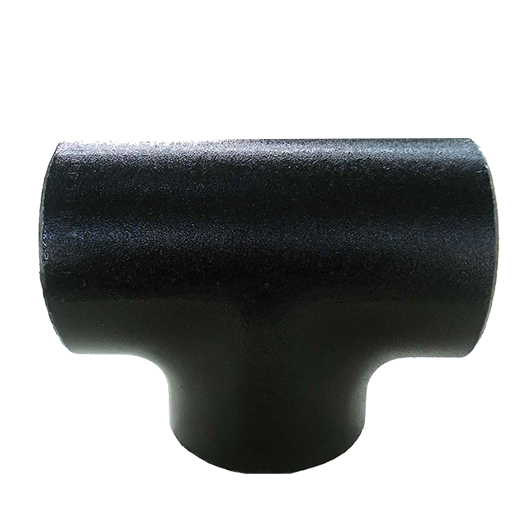Carbon steel tees are generally used for the installation of regulating valves, and the use of exhaust. Concentric reducers are conducive to fluid flow, and have less interference with fluid flow when changing diameters

The seamless tee therefore uses concentric reducers for gas and vertically flowing liquid pipes. Because one side of the eccentric reducer is flat, it is good for exhaust or liquid discharge, and it is convenient for driving and maintenance. Therefore, eccentric reducers are generally used for horizontally installed liquid pipes.
The reducing pipe is also called the big and small head, and the diameters of the nozzles at both ends are different. It is used to connect pipes or flanges of different diameters to reduce the diameter. The two ends of the concentric reducer have the center of the circle on the same axis. When the diameter is reduced, if the position of the pipe is calculated by the axis, the position of the pipe remains unchanged. It is generally used for gas or vertical liquid pipe diameter reduction. The circumference of the nozzle at both ends of the eccentric reducer is inscribed, and it is generally used for horizontal liquid pipelines.
The butt welding tee is an elbow formed by steel hot pressing or forging. Its connection form is to directly butt weld the tee and the steel pipe. The main manufacturing standards of the butt welding tee are generally GB/T12459, GB/T13401, ASME B16.9, SH3408, SH3409, HG/T21635, HG/T21631, SY/T0510.
Butt welding tees generally have equal diameter tees, different diameter tees, etc., and the materials are carbon steel, alloy steel and stainless steel.
Carbon steel tees When the chromium content in the steel reaches about 1.2%, the chromium interacts with the oxygen in the corrosive medium to form a thin oxide film (self-passivation film) on the steel surface, and the seamless tee can prevent the corrosion of the steel. In addition to chromium, commonly used alloying elements include nickel, molybdenum, titanium, niobium, copper, nitrogen, etc., to meet the requirements of various uses for the structure and performance of concentric reducers. A certain production and processing technology is adopted in the production of diameter pipes to ensure that they can show good functions and performances in production and processing.
Concentric reducers are steels resistant to weak corrosive media such as air, steam, water, and chemically corrosive media such as acids, alkalis, and salts. In practical applications, they are often corrosion-resistant to weak corrosive media.